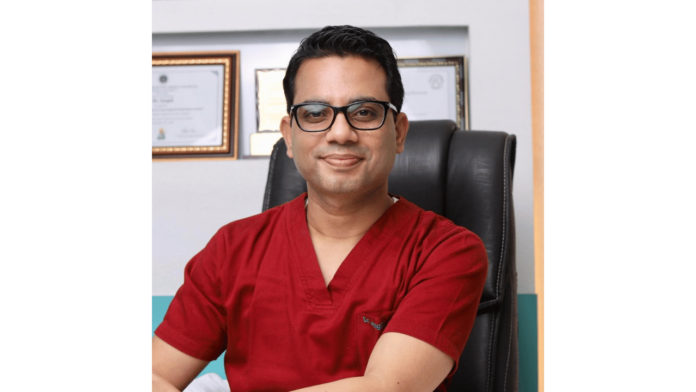Learn all about hair transplantation from Dr. B L Jangid, a renowned dermatologist and hair transplant surgeon and founder of SkinQure Clinic, Saket-New Delhi.
Hair loss has become increasingly common due to various factors like aging, hormonal imbalances, lifestyle changes, stress, mental health issues, and genetic or medical conditions. By the age of 35, around 40-50 percent of both men and women experience significant hair loss, which can lead to emotional distress, low self-esteem, and reduced confidence.
If you’re dealing with significant or ongoing hair loss, it’s crucial to consult with an experienced dermatologist or plastic surgeon before the situation worsens. Fortunately, there are effective and affordable hair restoration techniques available. Hair transplant is one such popular method in India and worldwide for individuals experiencing premature hair loss or desiring to change their hairlines. People are now more aware of these methods and their appearance.
However, questions arise regarding the safety and effectiveness of hair transplants. Are the results permanent? Are there any unintended tissue changes post-procedure?
What is Hair Transplantation?
Hair transplantation involves removing hair follicles from one part of the body and transplanting them to another, typically areas experiencing hair loss. The site can include your face, chest, or legs, which are then transplanted to the hairless areas. The same procedure is used to transplant hair in the lashes and brows.
There are two main types of hair transplant procedures:
- Follicular Unit Transplantation (FUT): This method has been in use for a considerable time. During FUT, the surgeon identifies donor sites, typically located at the back of the head, and removes a strip of skin containing hair follicles. After obtaining the skin graft, the area is closed, and the skin portions are strategically implanted into the recipient sites, usually the balding areas. Recovery typically requires 10-12 days of rest post-surgery.
- Follicular Unit Extraction (FUE): FUE is a relatively newer and more advanced technique in the hair transplant industry. It has gained popularity due to several advantages, including persistent hair growth, a natural appearance, minimal invasiveness, lack of visible scars, and easy post-treatment care with minimal downtime. During FUE, the surgeon uses small incisions to harvest individual hair follicles from the back of the head. These follicles are then transplanted into the recipient sites by making small holes using a blade or needle.
Both FUT and FUE can provide successful outcomes when performed by experienced dermatologists or plastic surgeons. The choice between the two methods depends on individual characteristics and preferences. FUE is considered more advanced, while FUT is generally less costly. Additionally, each technique requires different post-surgery care. Your hair transplant surgeon will guide you through both procedures and help you determine the most suitable option based on your unique needs.
Who is the Right Candidate?
The ideal candidate for hair transplantation has stable hair loss, is medically fit for surgery, possesses sufficient donor area, and can commit to the treatment’s timeline and aftercare regimen.
Beware of Low-Cost Options:
Dr. B. L Jangid MD Skin (Gold Medalist) ExSr-Dermatologist in AIIMS, New Delhi says With the growth of the hair transplantation market, numerous clinics offering low-cost procedures are emerging. While the affordability of these services may be tempting, it’s essential to recognize that opting for such clinics could potentially endanger your health. A low price should raise a red flag, indicating potential risks and compromising the quality of treatment and care. Research thoroughly, opt for qualified doctors, and ensure the clinic is well-equipped with modern technologies and trained staff.
In conclusion, it is strongly advised and recommended to prioritize a reputable clinic, even if it entails higher costs compared to budget hair transplant clinics. Your health should never be compromised for the sake of saving money.
Remember, a trustworthy doctor will always provide transparent guidance without withholding any information. Building trust between the patient and doctor is crucial. High levels of trust lead to numerous benefits, including better perceived care and increased acceptance and adherence to treatment recommendations.
About Dr Jangid: Dr. B. L Jangid MD Skin (Gold Medalist) ExSr-Dermatologist in AIIMS, New Delhi, Award winner, embraces more than 13 years of experience in revolutionary treatments, technology and research into skin, hair problems, skin surgeries, hair transplant operations, lasers, and anti-ageing.
He has graduated from JLN Medical College Ajmer and did internship from SMS Medical College in Rajasthan Medical University in 2008 and has also functioned as a resident doctor in RML Hospital New Delhi for 1 year. Later on, he completed his master degree (MD Dermatology) from India’s leading university, Annamalai University. After MD, he got chosen in AIIMS as senior and high-ranking resident after getting 2nd rank in all India exams in June 2013. At present, he is working as an eminent dermatologist in SkinQure New Delhi, and ZI Aesthetics, Chennai.
He is a member of Indian Association of Dermatologists, Venereologists and Leprologists (IADVL), American Academy of Dermatology (AAD), Association of Cutaneous Surgeons of India (ACSI), Cosmetic Dermatology Society of India (CDSI), Indian Academy of Aesthetic & Cosmetic Dentistry and Cosmetology Society of India (CDSI)


